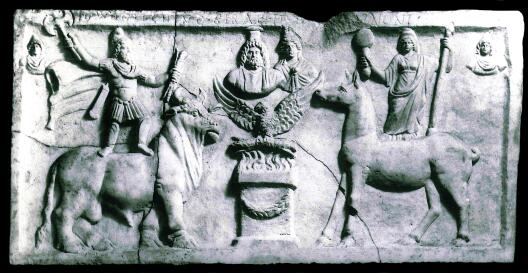(B2-20) Media Representation and Religious ‘Market’: Syriac Cults in the Western Imperium Romanum

In the 2nd/3rd century A.D., a process of profound transformation of religious parameters culminated in the ancient world. In the entire Imperium Romanum, from the capital to the garrison locations at the empire’s borders, a complex coexistence and cooperation of divergent cults and religions evolved. Through the individualisation of religion and of the experience of religion, the adopted religious community joined the “civic religion” community, globally oriented religious systems join the regionally located cults. Eventually, this process ended in the dominance of the Christian religion in the entire empire. Prior to this, however, a new form of religious pluralism developed for a short while in which a multitude of religious and quasi-religious systems competed. This new situation has been described as a “religious market”. Some Syrian cults which quickly spread throughout the Imperium Romanum played a particular role in this context. Iuppiter Dolichenus, Iuppiter Heliopolitanus and Dea Syria disengaged themselves from reference areas that were ethnically and culturally restricted in the first place, and became state religions with very heterogeneous followers.
The purpose of the project is to analyse the transfers of these cults from their native contexts in Syria into a new religious environment, and to investigate their development and change in the respective new social frameworks. As the relevant literary sources are in most cases either tendentiously Christian or they were written by an intellectually pagan elite whose understanding of religion may not be generalised, the analysis will chiefly focus on archaeological and epigraphic evidence. Methodically, particularly the investigation of its medial representation offers innovative opportunities. Origin, conditions and goals of their self-projection and public image in the west of the Roman Empire are to be questioned. What are the distinctive marks of the individual Syrian gods? How important was a visible “corporate identity” for them? Are there regional differences in the way they were represented? Are there any reactions to diverging contexts and political developments in each case? In addition, syncretisms can frequently be detected, as when Iuno Dolichena was equated with Isis or Iuppiter Dolichenus was conformed to Iuppiter Optimus Maximus. What do such processes conceal, and what do they reveal about religious contents and procedures?
The Project is part of interconnecting platform F Transcultural Entanglements and coordinated project group Figurations of the religious and the political.

